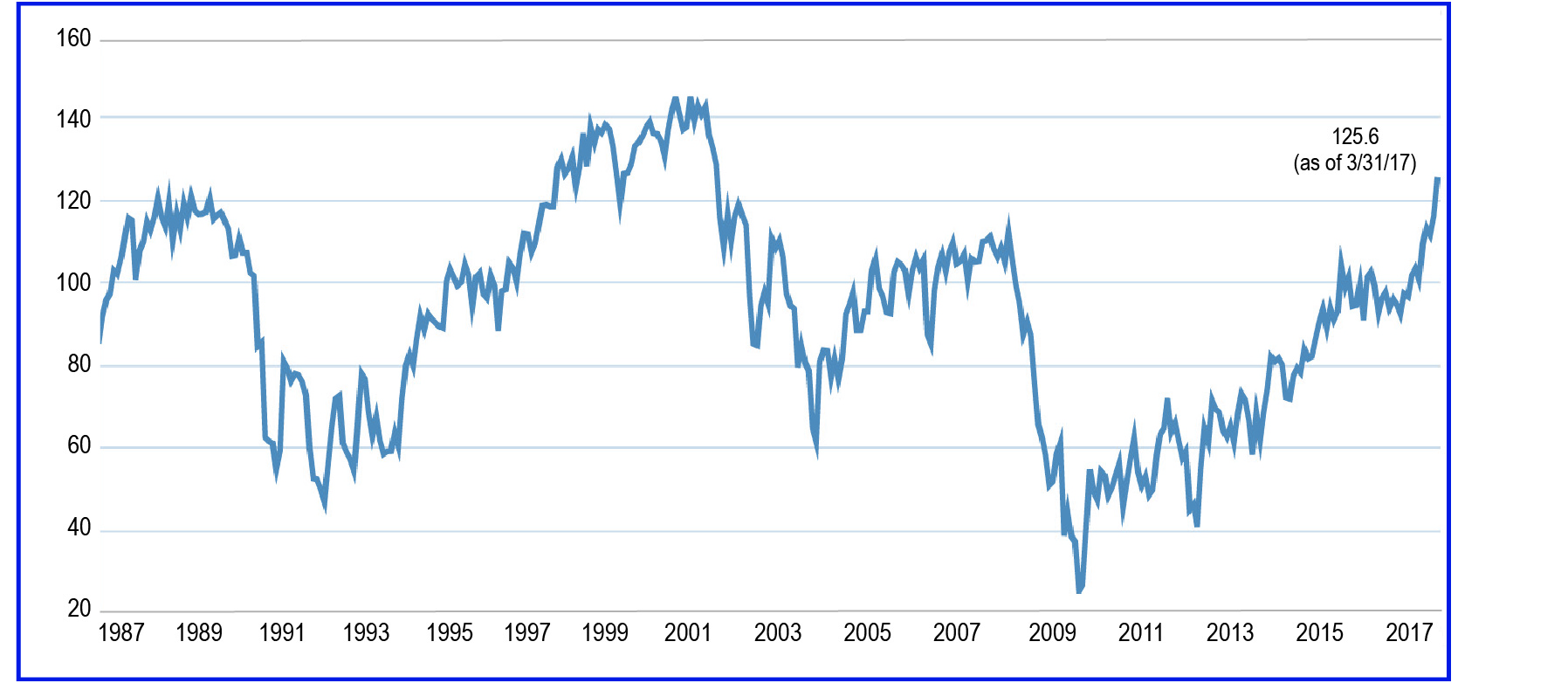The First Quarter of 2017: March Madness
by Eric Schopf
The stock market built on year-end momentum and racked up impressive gains in the first quarter. The Standard and Poor’s 500 provided a total return of 6.07%. Optimism ran high for President Trump’s aggressive fiscal policy. Consumer confidence reached levels not experienced since 2000. The mantra of lower taxes, reduced regulation, and increased infrastructure spending was the sweetener for a powerful sugar buzz. The market’s rapid ascension was dubbed the “Trump Bump.”
The sugar high began to wear off as plans to repeal and replace the Affordable Care Act floundered. Even with control of the House and Senate, Republicans could not find common ground. Revised healthcare legislation didn’t even make it to the Floor for a vote. With that failure, suddenly the remaining tenets of the President’s platform appeared vulnerable. The Trump Bump became the Trump Slump as the stock market delivered negative returns in March.
The President continues to dominate the news cycle. Unfortunately, his polarizing temperament and rhetoric have somewhat obscured the economic fundamentals. Looking instead at the economic data, all the forward-looking indicators are solid. Payroll growth and manufacturing activity have been robust. Additionally, new manufacturing orders and production are at two-year highs. Although manufacturing represents a small portion of the U.S. economy, it serves as an important bellwether.
The bond market paints a similar picture as the stock market. Through mid-March, interest rates across the yield curve moved higher in anticipation of better economic growth combined with higher inflation. Then, failure to enact healthcare reform resulted in intermediate and long-term interest rates falling precipitously. After this fall, yields on U.S. Treasury securities with maturities greater than two years are lower than at the start of the year. Interest rates on
Treasury securities inside of two years are higher than at the start of the year, because the Federal Reserve has continued to lay the groundwork for additional interest rate increases through the balance of the year.
US Consumer Confidence
Of course, this wouldn’t be a financial newsletter without mention of the Federal Reserve. The positive economic impact of the Fed’s accommodative monetary policy following the Great Recession cannot be overemphasized. Over the past five years, the Fed has walked back potential interest rate increases many times. Going forward, the success or failure of the Trump administration’s monetary policy will play a key role in Fed policy. Should economic growth fail to launch, there is little reason to be aggressive with rates. A continuation of low interest rates can keep the slow-motion recovery moving forward.
In addition to monitoring the Fed’s policy regarding short-term interest rates, we are also monitoring its management of the $4.5 trillion fixed income portfolio amassed as part of their quantitative easing program. These U.S. Treasury and mortgage-backed security purchases were made to push interest rates lower across the yield curve. Eventually, steps will be taken to wind down the financial operation by allowing bonds to mature without reinvesting the proceeds. Allowing bonds to mature in this way is in effect a drop in demand for the securities and should result in higher interest rates.
The stock market weakness in March did not come as a great surprise. There is an old saying on Wall Street, “buy on the rumor and sell on the news.” The President was swept into office with a clear message and was warmly embraced by the stock market. During this period of “rumor-buying,” the S&P 500 provided a total return of nearly 16% between election day and the intra-quarter high set on March 1st. The reality of the gridlock in Washington is the not-so breaking news that tempered investor enthusiasm. As we mentioned in the fourth quarter newsletter, the market posted very strong gains in anticipation of “making America great again.” We could see further consolidation over the coming months as the task is put to the test.
The risks going forward are similar to those confronted over the past year: monetary policy initiatives with a leveling dose of fiscal policy to keep the economy on an even keel. Trade policies are a work in progress, and Europe shows the stress of being pulled in many different directions. As always, we remain vigilant in managing your portfolio to balance risk and reward.
In closing, Tufton Capital would like to make a brief comment on the political environment. This newsletter has never been political in nature, and we are not starting now. Nevertheless, we cannot ignore policy actions by our executive, legislative and judicial branches of government. Words, such as “polarizing” and “warmly embraced,” are selected with great thought. We realize that our clients span the political spectrum, and some may not agree with our characterizations. The post-inauguration period has created a level of consternation that we haven’t seen in a long time. Let us assure you that we remain focused on the fundamental attributes of the companies we own and the underlying economy. In turn, it is important for you to remain focused on your longterm investment objectives and the investment policies that have been put in place by us to help you meet your goals. Sharp deviations from a sound investment policy could be very costly.




